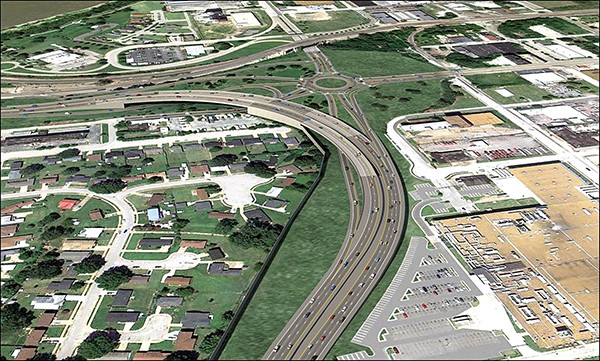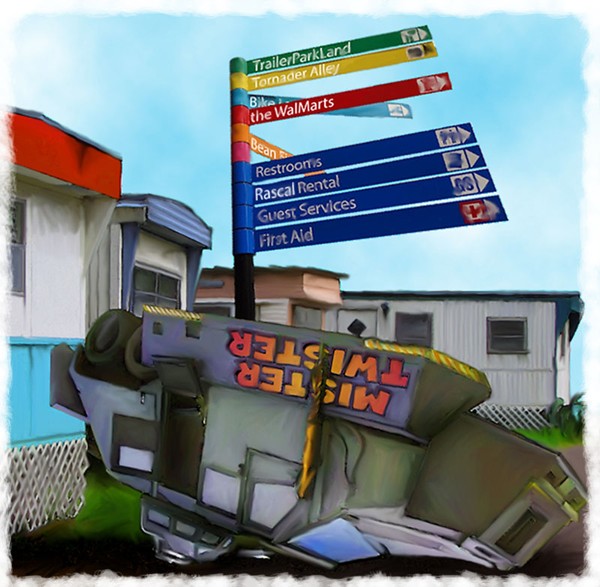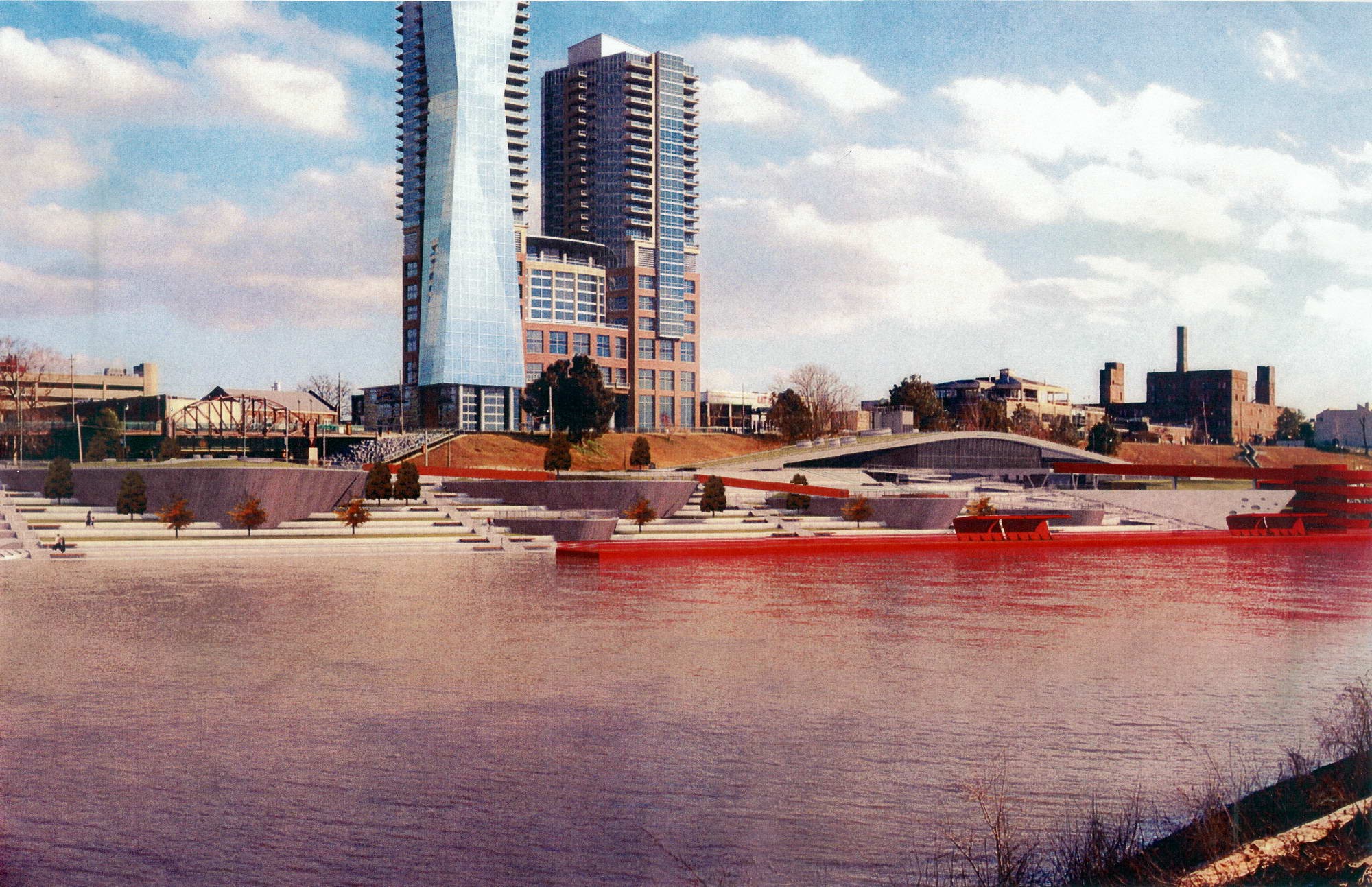Predictions of the consequences from the planned, nine-months closure of the Memphis-Arkansas Bridge range from inconvenient to nightmarish, but a Tennessee Department of Transportation (TDOT) official said there was simply no other way.
Speculation and worry followed last week’s announcement that TDOT plans to close the bridge while it builds a new interchange at I-55 and E.H. Crump. A public meeting about the project was held in West Memphis Monday. Another meeting is scheduled for 4 p.m. Thursday at Memphis Area Transit Authority Central Station.
The project will cost close to $35 million and will replace the current cloverleaf design of the interchange, which TDOT calls “outdated,” claiming it poses safety and efficiency concerns. The new design will feature a roundabout to connect I-55 traffic to downtown Memphis and curved ramps to allow I-55 thru traffic to continue on and off the bridge without slowing down.
 Courtesy TDOT
Courtesy TDOT
An artists rendering of the proposed new interchange at I-55 and Crump.
The three-year construction project won’t begin until spring 2016 and the planned closure of the bridge won’t begin until spring 2017, said B.J. Doughty, TDOT communications director.
“We do not take this lightly; this is a major undertaking for us, as well,” Doughty said. “If there had been any other way … we would choose not to shut it down. We realize this is an enormous inconvenience for people.”
The long curved ramps to I-55 will be built over the roundabout, where the cloverleaf is now, Doughty said. To make way for big bridge pieces like beams and piers, there will be no place for traffic to pass, she said.
During construction, all I-55 traffic will have to be routed across the Hernando DeSoto M Bridge, and that has people worried.
Manny Belen, deputy engineer for the city of Memphis, said his office has expressed to TDOT that the project needs to be sensitive to the impact on businesses, commuters, downtown residents, freight movement, and emergency responders.
“Additionally, we’ve expressed concerns about the impact of the planned detour through the Midtown section of I-240 and the inevitable traffic congestion,” Belen said. “The response from TDOT is that this nine-months closure is the most prudent direction and the least impactful.”
Congressman Steve Cohen said he does not support the planned closure and believes the construction can be accomplished without closing the bridge. At a minimum, he said, any closure period should be expedited.
Paul Morris, president of the Downtown Memphis Commission, called the planned closure “painful,” but its results will dramatically improve the approach to downtown Memphis and reconnect the French Fort neighborhood to downtown.
“I certainly wish there were a way for them to do the work without closing the bridge, which is going to be very bad for downtown and West Memphis,” Morris said. “This is little comfort, but we will have the Big River Crossing over the Harahan open by the time of the closure, meaning that it will be easier to bike rather than drive across the Mississippi River.”
If the bridge is closed as TDOT plans, I-55 traffic would be diverted to I-240 through Midtown, up to I-40 and across the Hernando DeSoto Bridge. Doughty said TDOT plans to work closely with local law enforcement and emergency services to keep traffic running efficiently in case of an accident.
Doughty said TDOT closed a section of I-40 close to downtown Knoxville in 2008, and the project went “incredibly smoothly.”
 Greg Cravens
Greg Cravens 
